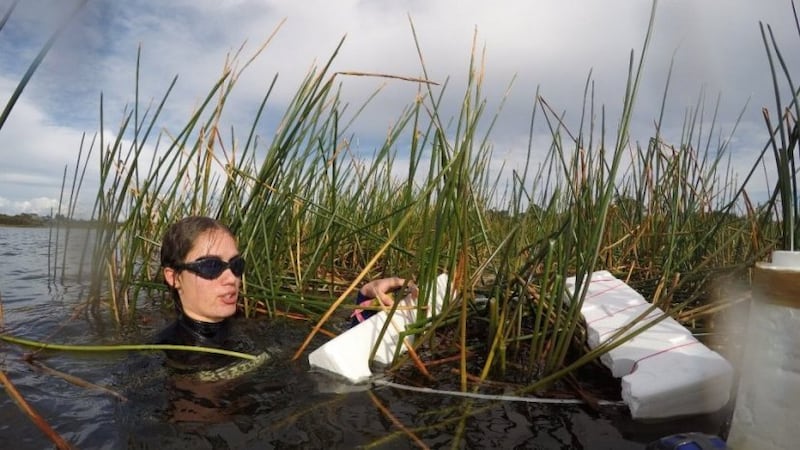Matariki Wehi collecting samples of kuta. Source: Manaaki Whenua
Some plants traditionally used in Māori medicine may become less available as a result of climate change, according to new research.
A study by Manaaki Whenua - Landcare Research and NorthTec say two of the plants at risk are kuta and kūmarahou.
Kuta is a soft, golden sedge found in wetlands across Aotearoa and is especially valued in the North Island where it is weaved into highly-prized mats, hats and baskets.
Kūmarahou is a shrub that flourishes on well-drained clay soils in the northern regions of the North Island and is used to treat respiratory ailments.
Kuta
Te Hemo Ata Henare of NorthTec says her team created forecast maps of kuta’s current and future distribution under two climate change scenarios and compared them to known harvesting sites
They found that changes in temperature and rainfall patterns will likely have an impact on soil density in the wetlands where kuta grows.
As a result, kuta may become less available in the Far North, where many of the weavers who use the plant live.
"Members of my community travel up to four hours to harvest kuta. Some of the sites are incredibly difficult to reach because of the overgrown land and involve long-distance swimming and deep diving."
Henare says reduced local access to species is typically associated with a loss of biocultural knowledge.
"Weavers prefer to gather plants in their own tribal area, so this becomes an issue," she says.
Kūmarahou
The forecast maps reveal that kūmarahou is likely to expand its range to the rest of the country as temperatures tend to become warmer.
Kūmarahou may be ceremonially gifted or exchanged between tribes and researchers say since cultural currency is still practiced amongst many tribes, the expansion could have an impact on tribal prestige and gifting practices.
Matthew Bond. Source: Manaaki Whenua
Matthew Bond of the University of Hawai'i at Mānoa says the results show that there are still places where the climate will be suitable for these plants to grow in the future.
“However, these plants will become less available in places where they are most valued for weaving and medicine. This means that although the species themselves are not threatened by climate change, the human knowledge, history, and use of these plants are."
When it comes to climate change, he says, “We should not just think about species extinction, but the relationships between people and nature.
"Our hope is that other researchers and indigenous peoples can use our work as a model to study the plants that are important to them."

